Whether you are bewitched by it like Woody Allen or have never been there, for everyone Venice represents one of the wonders of the world to be known and discovered again and again. The most apt adjective is “unique”-there is nothing else to add to this harbinger of history and beauty that has been making waves for 1,600 years. A place where even a typewriter store makes history, a theater becomes a supermarket, a hospital or a hospice is as beautiful as a museum or where the navigator between calli and bridges makes you go wrong so you might as well go where your feet take you without looking for a specific place. This is where art has indulged itself by knowing how to innovate and evolve. Of course, if you go there today for certain stretches of street you will feel like you are on the main street of Verona or Turin or on Via Toledo in Naples or on some street in the center of Rome. The standardization of commerce on a global scale is eroding those traits of authenticity that shopkeepers or shopkeepers in one city used to convey to you over another. Now reviewing the storefronts of large franchise chains flattens everything, empties funds to make room for pizzerias or the sale of souvenirs made in china or the pizzeria (typical Venetian dish of course) run by Tuscans. We hope that the millennial pride of the true Venetian will awaken and bring some order back. In the meantime, we suggest unusual places that are noteworthy and are almost always snubbed by the hundreds of thousands of tourists who move to the usual places.
Not far from the Rialto Bridge, in the sestiere of Cannaregio along the calle that connects Strada Nova with Campo San Bortolomio, one can find the church of San Giovanni Crisostomo, a place of worship in the shape of a Greek cross that has been built and rebuilt several times since the year one thousand, which in this arrangement is the work of the great architect Mauro Codussi, who ended his earthly life with this building, leaving the completion of the construction to his son. The church based on Codussi’s design began its work in 1495 to be finished in 1525, and in 1531 began those desired by the Venetian Senate to widen the calle in front. In 1488 Pope Innocent VIII granted an indulgence of sins to anyone who contributed financially to its reconstruction. The naming of the church is due to the relic of the Patriarch of Constantinople preserved and venerated there. But it is important to visit for the works of art it contains, first and foremost Giovanni Bellini’s altarpiece with Saints Christopher, Jerome and Louis of Toulouse, his last work before his death. Also worth mentioning are the precious altarpiece of the high altar, a masterpiece by Sebastiano del Piombo known simply as the St. John Chrysostom Altarpiece, and Tullio Lombardo’s marble altarpiece with theCoronation of the Virgin among the Apostles.
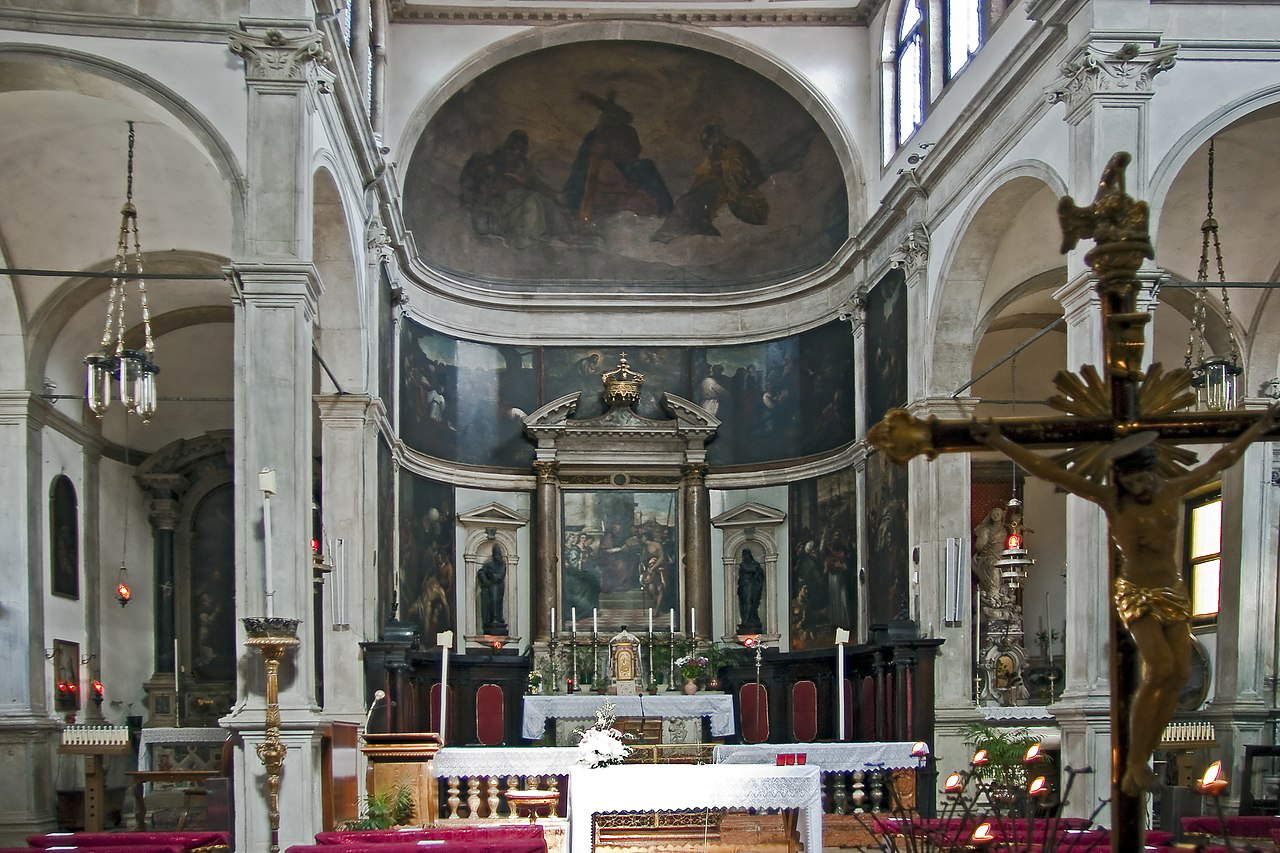
In Campo dei Gesuiti there is an almost anonymous scruffy building for which one would never say it was worth entering. And that would be a mistake. Because a medieval building with a simple gabled structure is theOratorio dei Crociferi, and inside is a painting cycle on canvases of great artistic importance by Jacopo Palma il Giovane created between 1583 and 1592 on commission from Doge Pasquale Cicogna. This area in the 12th century was entrusted to the order of the Crociferi fathers to make it a resting place and refuge for the many pilgrims who were on their way to Jerusalem; later it was used as a shelter for single women. In this small 50-square-meter chapel, one enters as if into a precious casket for the beauty of the eight of the most beautiful canvases by Palma the Younger, an artist who had worked in many Venetian churches with this particular technique typical of the Lagoon, which consisted of a type of painting with oil colors that used canvases - precisely - made of linen or hemp mounted on a wooden frame and applied directly to a wall, to obviate the problem of the deterioration of frescoes in a humid environment such as Venice.
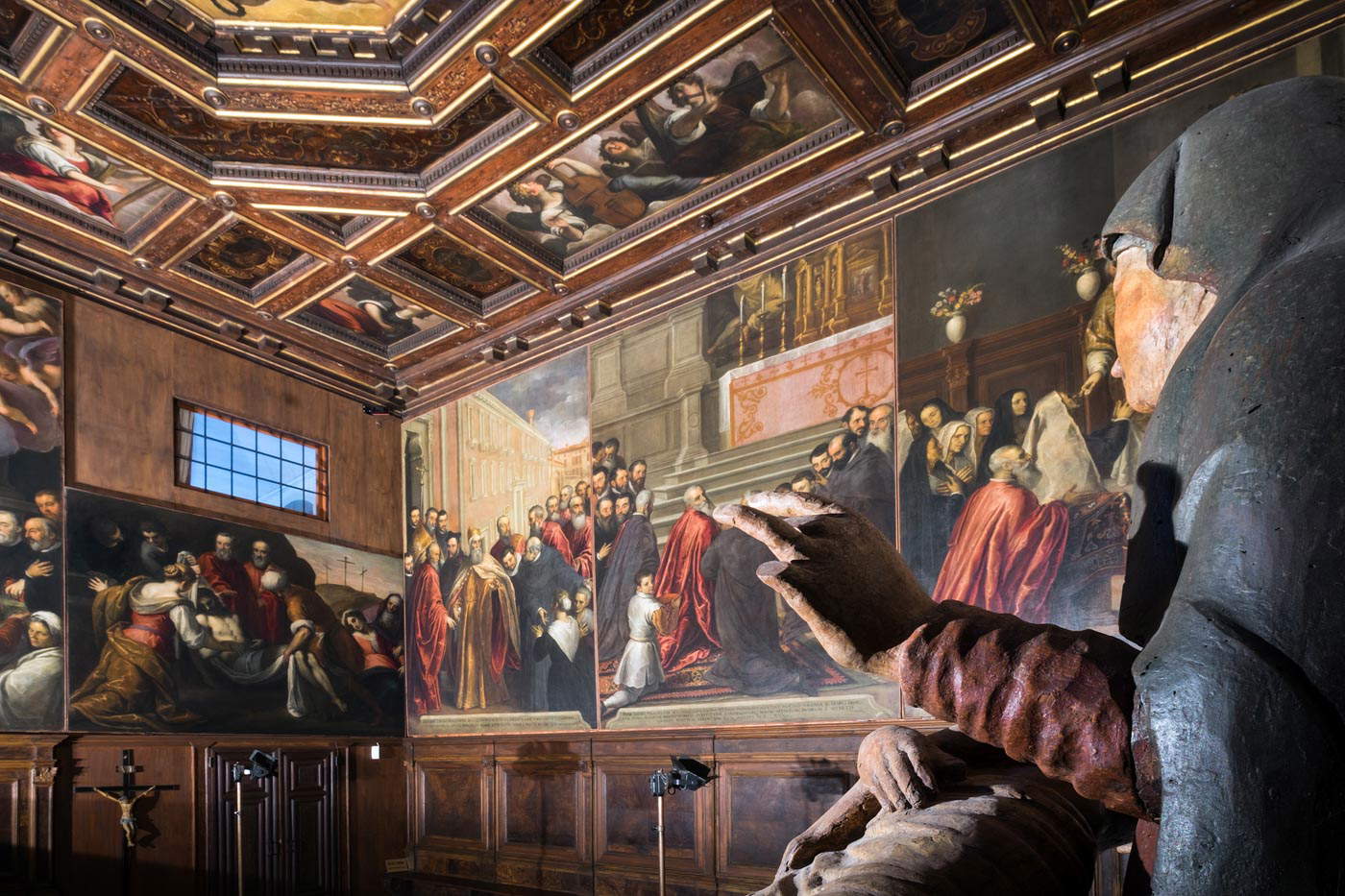
Overlooking the Grand Canal, with an imposing Baroque style, stands Ca’ Pesaro, the palace of the wealthy, noble Venetian family that in the late 17th century commissioned the famous architect Baldassarre Longhena to build it. Longhena died before completing the work, which was later finished by Antonio Gaspari. Since 1902 it has been home to the International Gallery of Modern Art (first and second floors) and the Venice Museum of Oriental Art (third floor), both of which are part of the Venetian civic museum circuit. Majestic, grand, imposing, sumptuous: adjectives for Longhena’s architectural masterpiece are wasted; what is certain is that here he had a chance to express himself and experiment. The façade is articulated and complex: from the diamond-pointed ashlar crossed by two rows of windows we have two portals in the center on the water; going up we perceive the influence of Jacopo Sansovino with a rhythmic chiaroscuro of the arches and columns. The Gallery of Modern Art on the second floor has the permanent collections while temporary exhibitions alternate on the second floor. Among paintings and sculptures by important artists of the nineteenth and twentieth centuries we have works by Klimt, Chagall, Kandinsky, Klee, and Moore, as well as a rich presence of Italian artists such as Medardo Rosso, Giacomo Balla, Adolfo Wildt, Arturo Martini, Gino Rossi, Giorgio Morandi and Felice Casorati, Massimo Campigli, Carlo Carrà, Giacomo Manzù, Ottone Rosai, Scipione, and Mario Sironi. Itineraries and key to understanding the complex artistic metamorphosis of a historical phase that broke from the canons of the past are proposed.

This church, rather than honoring the God of Christianity or the exploits of the Venetian Republic, is meant to pay homage and celebrate the family that helped (re)build it: the Barbaro family. The church of Santa Maria del Giglio (the flower given to it by the archangel Gabriel) was founded in the 9th century but after fires and collapses was rebuilt in the second half of the 17th century by Giuseppe Sardi on commission from Antonio Barbaro, of a noble Venetian family. The rich Venetian Baroque facade, in fact, has no references to the Republic, and the statues in the niches are of family members. Barbaro also, as a testamentary will, wanted to be depicted in the robes and accessories that were symbolically used for sea captains, which he never became. The church is of recognized beauty enough to be the subject of paintings by Canaletto and Francesco Guardi. But the interior is equally prestigious with canvases by Jacopo Tintoretto, Palma il Giovane, Paolo Veronese, Zanchi and Rubens.
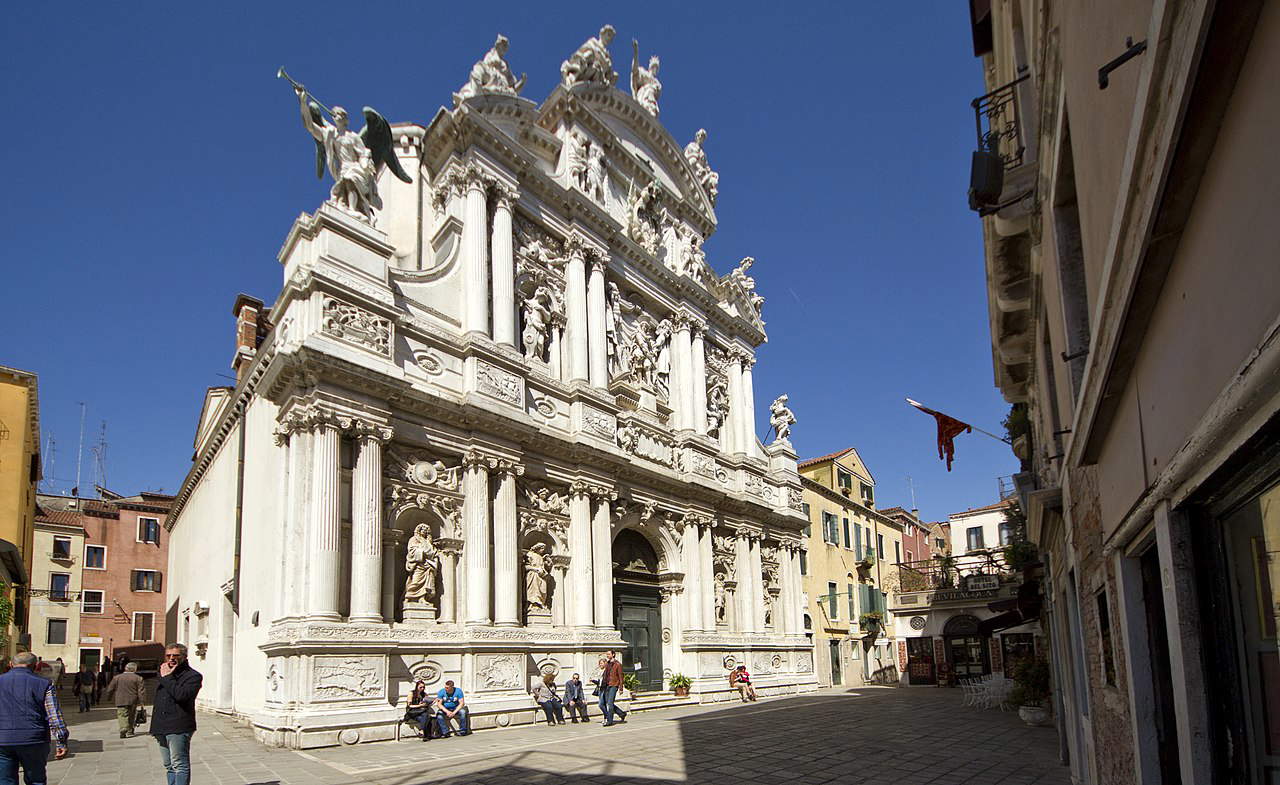
In Venice, the Libreria Acqua Alta, on Calle Lunga Santa Maria Formosa, is worth a look. It is not the classic shopping arcade store under a station, it is a bookstore like the old-fashioned ones but with a lot of extra originality in the layout: among boats, gondolas, canoes and ...cats, you can find your book among the many titles it has. It is a cultural place rather than a supermarket from which to choose the cereal of the day from the shelf, where everything has a use and a connection. Like the encyclopedias used to make stairs or the shelves outside the front door. Nourished is the selection of books on Venice and its traditions, from history to cuisine, from carnival to clothing to any aspect typical of the Lagoon. The uniqueness of the décor is closely related to the name and the place: when the water, the real water, is high the bookstore is invaded by it, hence owner Luigi’s idea to use gondolas, bathtubs and barquettes where to put the books so they don’t get wet. It has become a quaint and tasteful place of it, just to pass by and maybe buy a good book.
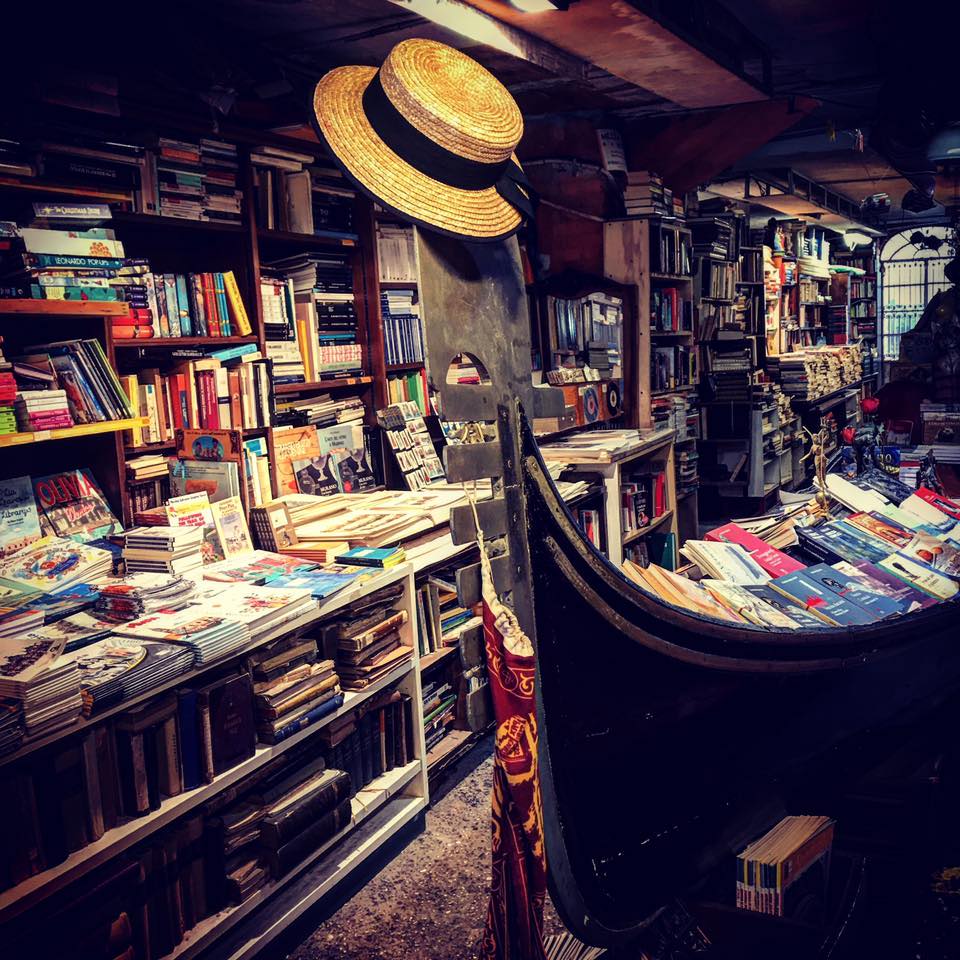
The Basilica of Saints John and Paul is the largest largest in Venice (it took nearly 100 years to complete, consecrated in 1430) with its 30 meters high and dome reaching 55 meters, its more than 100 meters long and its 45-meter transept, and represents a bit of its Pantheon by guarding the remains of as many as 27 doges (as well as other figures such as Giovanni and Gentile Bellini and the Bandiera brothers) honored with tombs, monuments, tombstones, and large sarcophagi decorated and adorned with sculptures and paintings by such important artists as Giovanni Battista Piazzetta, Giovanni Bellini, and Paolo Veronese. The Gothic-style façade has a large central rose window plus two smaller side ones, at the top soar three spires in the shape of a small temple with statues of St. Dominic, St. Thomas Aquinas and St. Peter Martyr inside. The beautiful portal is by Bartolomeo Bono. The interior is a riot of works and artists. Also special is the large space in front of the entrance, not many squares in Venice, which it shares with the Venice Civic Hospital that was once the Scuola Grande si San Marco. To say “hospital” is reductive and misleading to the reader’s imagination, but Venice is the place where even a hospital can be like a cathedral.
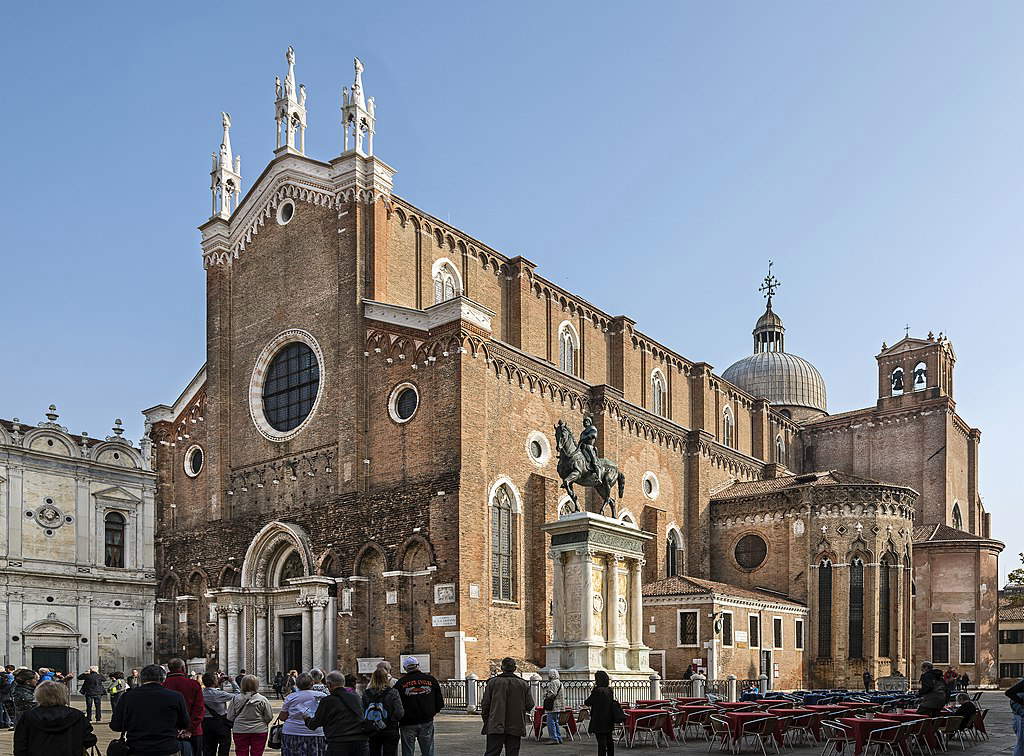
Venice is also home to the supermarket you might not expect. In fact, the glorious Cinema Teatro Italia, which has made generations of Venetians sit in their seats for 100 years since 1916, became a supermarket in 2018. This is a unique intervention given that we are not talking about a suburban shed but an architectural jewel designed by Giovanni Sardi between neo-Gothic and Art Nouveau that is protected by the Fine Arts. The building had lost its function for about twenty years with the entertainment crisis and was abandoned to disuse, until the Coin family bought it to renovate it and with a chain of large-scale food retailers decided to follow the example of the London warehouses to let Venetians shop in elegance, surrounded by those beautiful frames and frescoes visible thanks to the low shelves. After two years of restoration, it opened amid amazement and even criticism but undoubtedly returned to the community a place that by losing its primary function was in danger of remaining only closed. The room contained 1,200 seats and on the walls the decoration consisted of putti and eight panels, four of which were decorated by Alessandro Pomi and four by Guido Marussig. Wrought iron everywhere, electric light bulbs. The facade with single and triple lancet windows and four wrought-iron entrance portals were designed by Umberto Bellotto (as were the chandeliers inside). Both distinctive and innovative, it is certainly worth a visit to sample this experiment in urban regeneration.
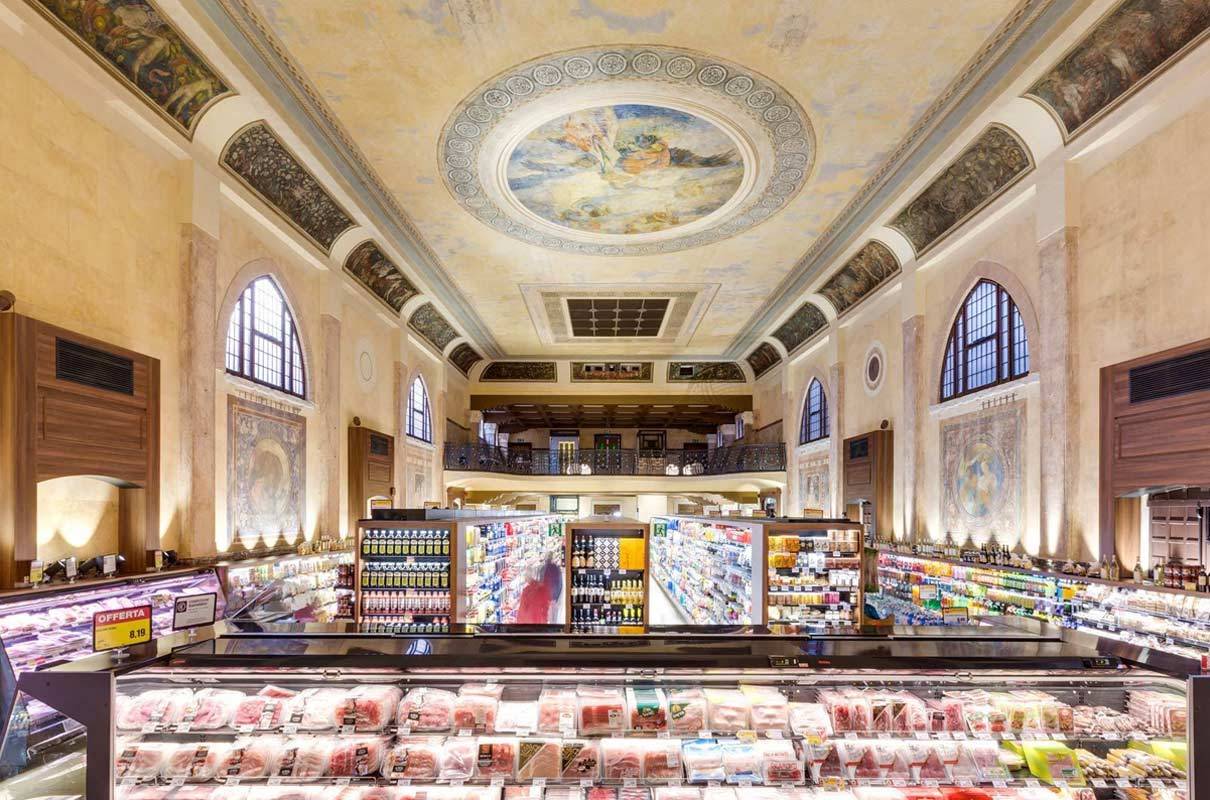
The palace of Ca’ Rezzonico overlooking the Grand Canal with its innovative facade has been the home of the Museum of the Ven etian Eighteenth Century since 1936. Aalso the design of this palace was by Baldassarre Longhena who did not finish the work when he died in 1682 (it was later completed in 1750 by Giorgio Massari). Between frescoes by Giambattista Tiepolo and Giambattista Crosato, paintings by Antonio Canaletto, Francesco Guardi, Giambattista Piazzetta, Rosalba Carriera, and Pietro Longhi, sculptures by Antonio Corradini, Andrea Brustolon, Filippo Parodi, and Giusto Le Court, and original furnishings from the 17th and 18th centuries, the visit represents very well the flourishing cultural and artistic history of the Serenissima. Starting from the imposing ballroom unique in size and decoration in all of Venice, to the Tapestries or Throne Room or the Tiepolo Room.
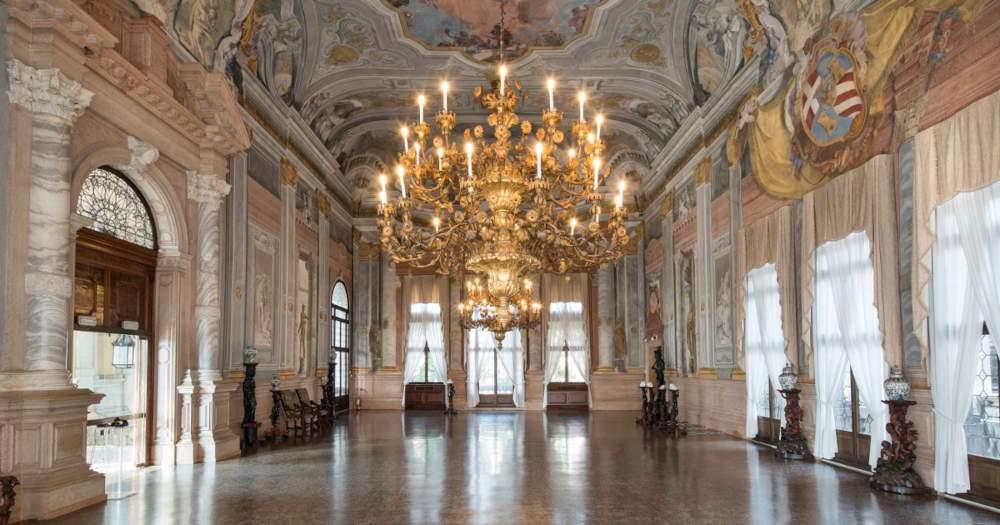
The Scuola Grande di San Rocco is inextricably linked to the name of Tintoretto, who worked here for two decades frescoing walls, ceilings, and painting canvases that have entered the history of art. The Scuola Grande di San Rocco is a complex that includes the Scuola building, the Church and the scoletta, dedicated to Venice’s most revered saint, who has an important relic preserved here and played a very important role in the civil and social life of the Serenissima. Importance that is immediately understood by the grandeur of the structure and the works of art that are preserved there. Let’s say right away that the Venetian ’Schools’ were lay confraternities that gathered around them the bourgeoisie and the class of professions that outside the nobility had been forming with the development of commerce. That of San Rocco dates from 1478, and Tintoretto was chosen in 1564 to decorate the ceiling of the Sala dell’Albergo. And then the Capitular Hall and the Sala Terrena to create the artist’s most famous painting cycle with which he has often been compared to what the Sistine Chapel represents for Rome. But the wealth of works of art also includes Titian, Tiepolo and Giorgione, to name a few, a true treasure trove of valuables almost on a par with that of St. Mark’s, kept in 18th-century cabinets that over time has been despoiled but still holds a large number of objects. Mention should be made of the monumental staircase with its side walls superbly painted by Antonio Zanchi, Pietro Negri and Giovanni Antonio Fumiani for the dome above it. But much more space would be needed to give worthy notice of the things to see.
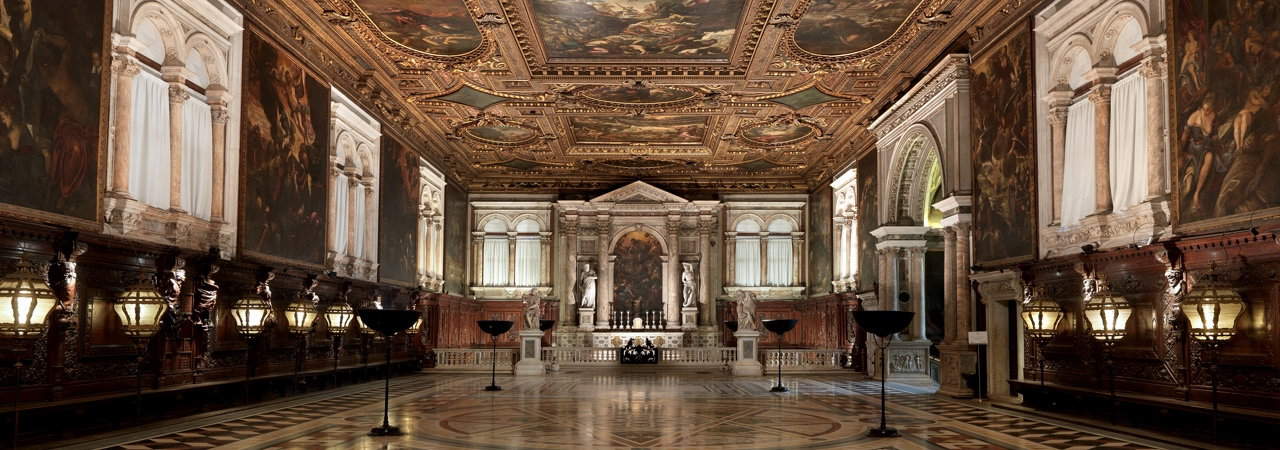
Not a store to buy a typewriter, but a monument of 1950s Italian architecture: this is the Negozio Olivetti. Typewriters are a pretext, the background for which to model this place by a great Carlo Scarpa. An Italian genius of the twentieth century, Adriano Olivetti commissioned him to design this store as a showcase to publicize his products, but Scarpa surpassed himself by knowing how to integrate himself into what was itself a protected and world-famous monument as the arcade of the Palazzo delle Assicurazioni Generali in St. Mark’s Square. Not a banal place of representation or a “showroom” as we would say now, but a true contemporary graft within the Venetian context. “The magnificent enclosure created by Carlo Scarpa and the objects displayed in it testify that harmony can be achieved through the careful study of places and attention to forms, even those of typewriters,” as Laura Olivetti had this to say on the occasion of the restoration of the Negozio Olivetti in 2011, a place where the voice of the enlightened client merges with that of the artist of forms’. Scarpa transforms a dark, closed backdrop by revolutionizing the space by giving it air with luminous display windows and placing in the center the large Aurisina marble staircase that seems almost suspended in the air, shaped with lateral displacements, through which one reaches the second floor, lofted. At the entrance is a fountain by Alberto Viani, Nude in the Sun, whose nozzle consists of a slab of white marble and internal copper with the Olivetti logo. Of note is the floor made of marble dowels and Murano glass of various colors.
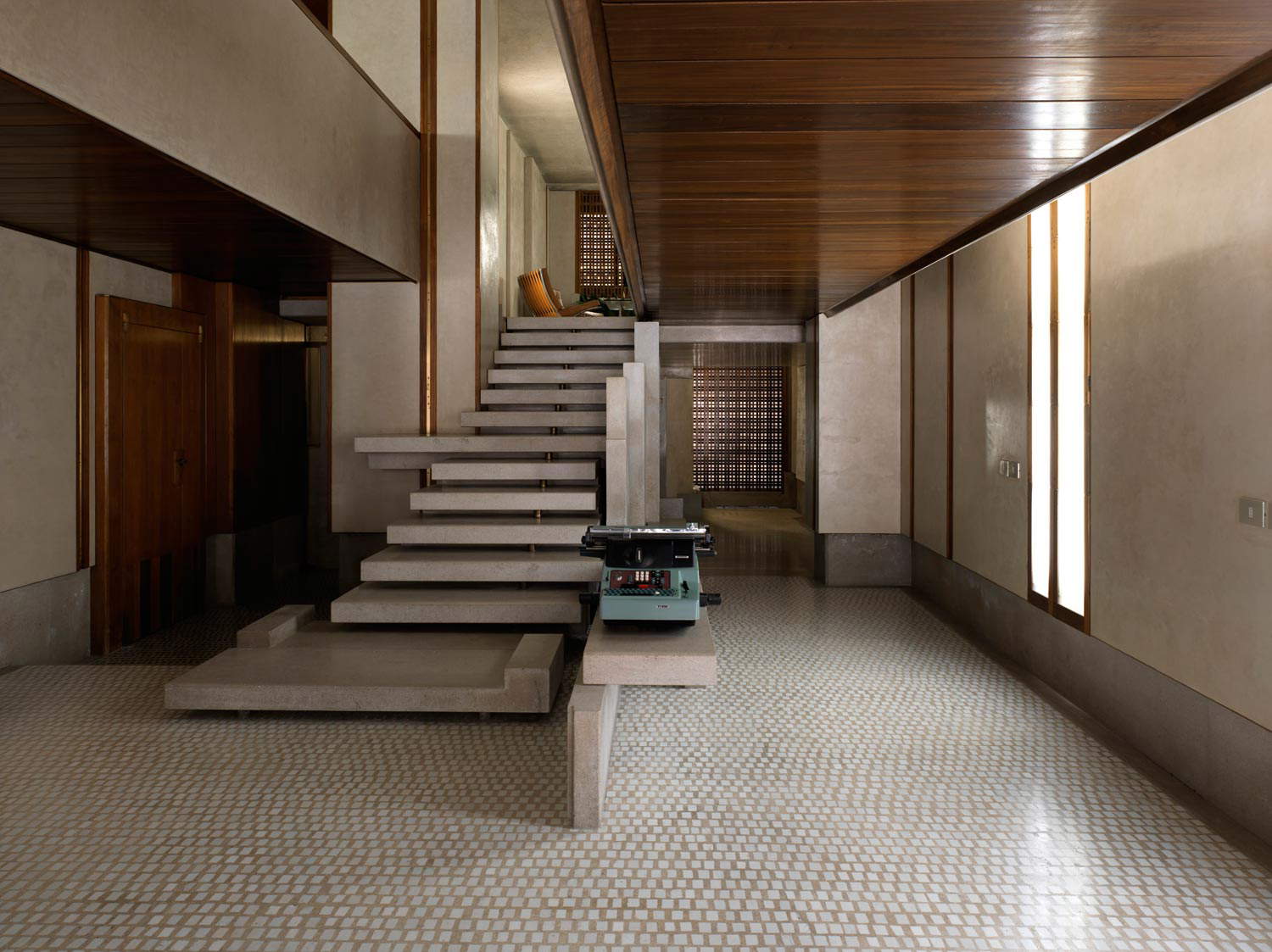
 |
| Venice, 10 unusual places off the beaten path of mass tourism |
Warning: the translation into English of the original Italian article was created using automatic tools. We undertake to review all articles, but we do not guarantee the total absence of inaccuracies in the translation due to the program. You can find the original by clicking on the ITA button. If you find any mistake,please contact us.